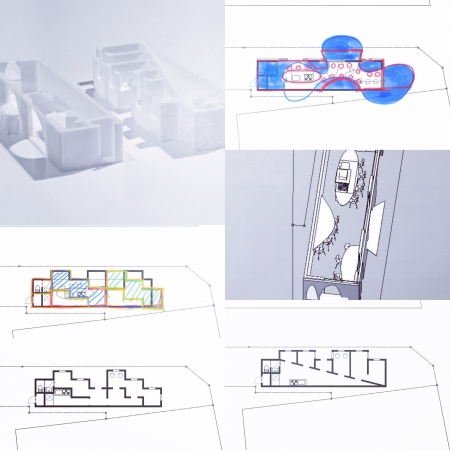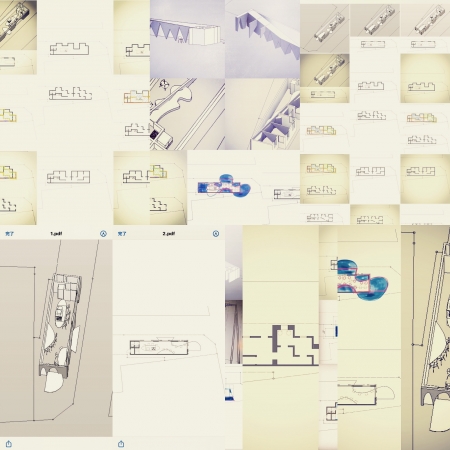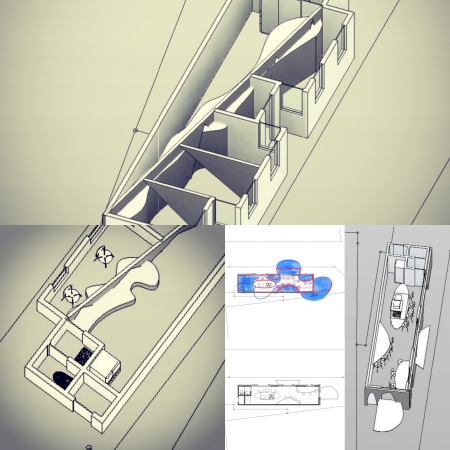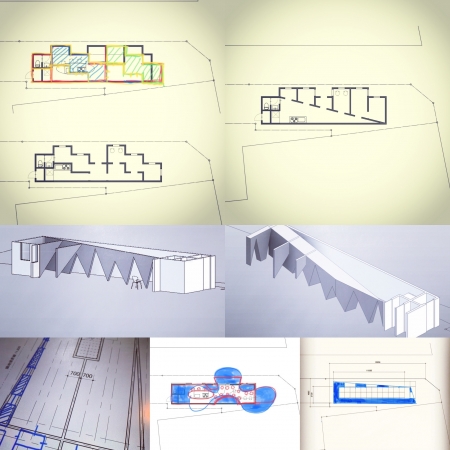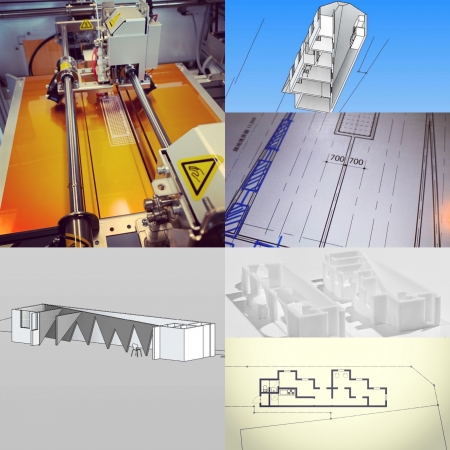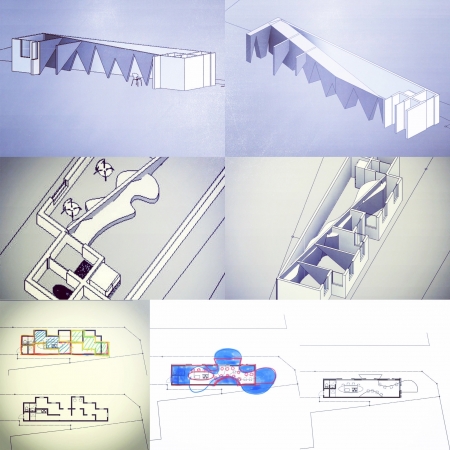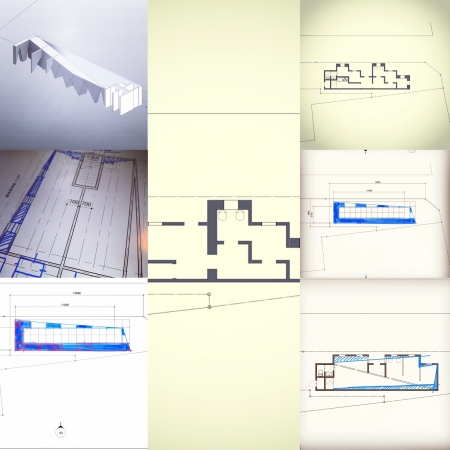感情や心の動きが物
人と物を分けて考える時、人は精神の塊のような扱いをして、感情や心の動きを対象にし、もちろん、人のアクティビティも念頭にはあるが、そのアクティビティは感情や心の動きから引き起こされるので、感情や心の動きに含めて一緒に考えしまうから、物と相対する人という構図になってしまうが、よく考えたら人もあらゆる物質から出来上がっているので、改めて物だと思うと、人の精神は物に左右されるということに気づく。
だから、最初に物があり、そこから人の感情や心の動きとして派生していく。そうすると、人と物という分け方より、物と物、いや、全てが物とした方が自然であり、ならば、感情や心の動きも物かとなる。
感情や心の動きが物ならば、形があり、大きさがあり、重さもあることになり、それは目に見える物として表現が可能になるはずである。
では、感情や心の動きが物で目に見えるようになるならば、その物の扱い方しだいでそれを建築や空間やプロダクトとして表現できる、などと考えてみた。
"Emotions and emotional movements are things"
When we think of things separately from people, we treat them like a mass of mind, targeting emotions and emotional movements, and of course, we also have human activities in mind, but those activities are emotional and emotional. Since it is caused by movement, it is considered together with emotions and movements of the mind, so it becomes a composition of a person facing an object, but if you think about it carefully, people are also made of all substances, so it is a thing again. When I think about it, I realize that the human spirit depends on things.
Therefore, there is something first, and it is derived from it as human emotions and emotional movements. Then, rather than separating people and things, it is more natural to make things and things, no, everything as things, and if so, emotions and emotional movements also become things.
If emotions and movements of the mind are things, then they have shape, size, and weight, which should be able to be expressed as visible things.
Then, if emotions and movements of the mind become visible in an object, I thought that it could be expressed as architecture, space, or a product depending on how the object was handled.

